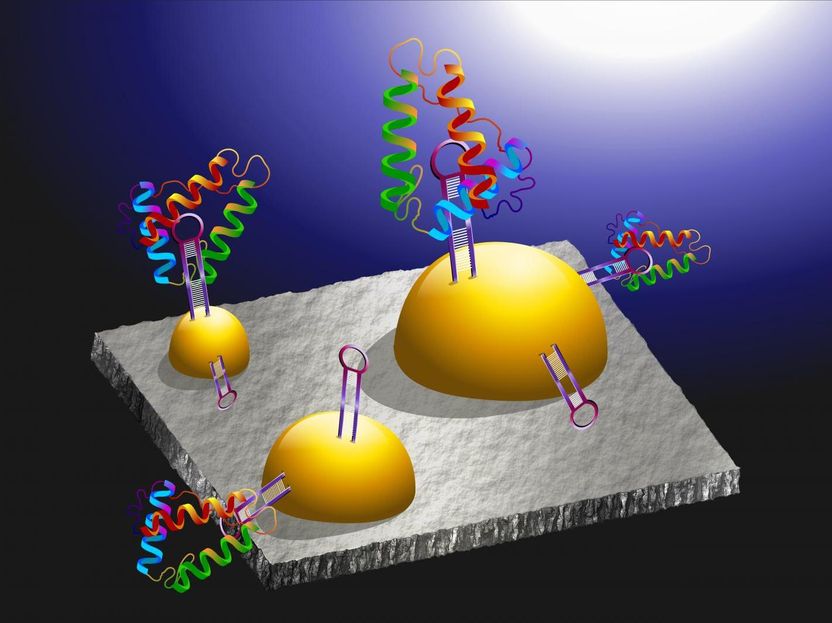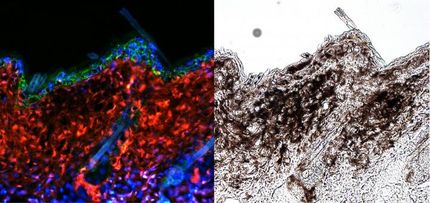Genes linked to cancer could be easier to detect with liquid lasers
Using a liquid laser, University of Michigan researchers have developed a better way to detect the slight genetic mutations that might predispose a person to a particular type of cancer or other diseases. Their results are published in Angewandte Chemie.
This work could advance understanding of the genetic basis of disease. It also has applications in personalized medicine, which aims to target drugs and other therapies to individual patients based on a thorough knowledge of their genes.
The researchers say their technique works much better than the current approach, which uses fluorescent dye and other biological molecules to find and bind to mutated DNA strands. When a patrol molecule catches one of these rogues, it emits a fluorescent beacon. This might sound like a solid system, but it’s not perfect. The patrol molecules tend to bind to healthy DNA as well, giving off a background glow that is only slightly dimmer than a positive signal.
“Sometimes, we can fail to see the difference,” said Xudong Fan, an associate professor of in the Department of Biomedical Engineering and principal investigator on the project. “If you cannot see the difference in signals, you could misdiagnose. The patient may have the mutated gene, but you wouldn’t detect it.”
In the conventional fluorescent technique, the mutated DNA signal might be only a few tens of percent higher than the background noise. With Fan’s new approach it’s hundreds of times brighter.
“We found a clever way to amplify the intrinsic difference in the signals,” Fan said.
He did it with a bit of backtracking. Liquid lasers, discovered in the late ‘60s, amplifies light by passing it through a dye, rather than a crystal, as solid-state lasers do. Fan, who works at the intersection of biomedical engineering and photonics, has been developing them for the past five years. In his unique set-up, a glass capillary called a “ring resonator cavity” amplifies the laser signal.
Last year, Fan and his research group found that they could employ DNA to modulate a liquid laser, or turn it on and off. His group is one of just a few in the world to accomplish this, Fan said. At the time, they didn’t have a practical application in mind. Then they had an epiphany.
“We thought, ‘Let’s look at the laser output. Can we see what’s causing the different outputs and use it to detect differences in the DNA?’” Fan said. “I had an intuition, and it turns out the output difference was huge!”
Most read news
Organizations
Other news from the department science

Get the analytics and lab tech industry in your inbox
By submitting this form you agree that LUMITOS AG will send you the newsletter(s) selected above by email. Your data will not be passed on to third parties. Your data will be stored and processed in accordance with our data protection regulations. LUMITOS may contact you by email for the purpose of advertising or market and opinion surveys. You can revoke your consent at any time without giving reasons to LUMITOS AG, Ernst-Augustin-Str. 2, 12489 Berlin, Germany or by e-mail at revoke@lumitos.com with effect for the future. In addition, each email contains a link to unsubscribe from the corresponding newsletter.
Most read news
More news from our other portals
Last viewed contents
New test eliminates need for skin irritancy tests on rabbits
New technique sorts drivers from passengers in cancer genomics, implicates GON4L
Eurofins’ global Melamine testing method supported by new milk testing standard developed by IDF and ISO





















































